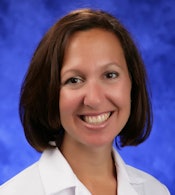
Notifying women at high risk of breast cancer through a patient letter doesn't seem to prompt them to take advantage of the services provided by a high-risk assessment clinic -- in fact, 85% of these women don't attend the clinic, according to a new study published in the Journal of the American College of Radiology.
Researchers from Penn State Hershey Breast Center found that letters sent directly to women who had a 20% or higher lifetime risk of breast cancer did not appear to motivate them to pursue further risk assessment. This occurred even as radiologists recommended to primary care providers that they discuss the elevated breast cancer risk with their patients.
The women's increased risk was due to a number of factors, including family history and carrying BRCA1 or BRCA2 mutations.
"The radiologist's recommendation for a provider discussion with the patient to pursue clinical risk assessment and the specific 'high-risk' letter to the patient was not sufficient to increase the percentage of women who followed up at the risk-assessment clinic," wrote Dr. Alison Chetlen and colleagues.
Real risk assessment
Women who come for screening or diagnostic imaging at Penn State Hershey Breast Center receive individualized risk assessment through the U.S. National Cancer Institute (NCI) Breast Cancer Risk Assessment Tool, which is based on the Gail model, the authors wrote.
 Dr. Alison Chetlen from Penn State Hershey Breast Center.
Dr. Alison Chetlen from Penn State Hershey Breast Center.The center uses MagView's mammography information management system, which generates standard mammography reports as well as patient follow-up recommendations and annual reminders written for lay audiences. The software also produces a lifetime risk analysis for each patient, regardless of whether the woman has a screening or diagnostic mammogram (JACR, July 14, 2015).
A total of 173 patients in 2011 and 241 patients in 2013 were included in the study. Data from 2012 were not included because that was the year a protocol for standardized high-risk reporting and patient communication was put into place, according to the researchers.
In this patient cohort, 40.5% were given a recommendation to attend the risk-assessment clinic in 2011, compared with 75.5% in 2013. However, despite the overall increase in recommendations by Penn State Hershey Breast Center radiologists, there was only a modest increase -- from 11.4% to 14.3% -- in the percentage of patients who then actually attended the risk-assessment clinic.
"Despite specific recommendations [from radiologists] to both physicians and patients, over 85% of high-risk patients did not consult a high-risk provider regarding their elevated lifetime risk of breast cancer," Chetlen told AuntMinnie.com in an email.
Why doesn't it work?
Women may not respond to patient letters due to a fear of cancer or perhaps a lack of understanding of terms such as "genetic counseling," which may provoke anxiety, the authors wrote.
"High levels of psychological distress may contribute to decreased adherence to screening recommendations and guidelines in women identified as having a high risk for breast cancer," they wrote.
The researchers offered several strategies for increasing the effectiveness of radiologist recommendations and patient letters:
- Educational seminars for providers at primary care clinics and grand rounds, which could include continuing medical education credits on breast cancer risk-assessment methods
- For patients, printed educational materials at the breast center, on- and offsite seminars, webinars, links to further information on the center's website, and lunchtime educational sessions on breast cancer risk led by radiologists and other healthcare providers
- Making referring providers aware of the risk-assessment clinic through the breast clinic's website, and surveying providers to determine reasons for low attendance at the risk-assessment clinic
- Conducting a study that evaluates referral patterns of patients, including by geography and by type of provider
It's crucial that women at high risk of breast cancer be identified early and that primary care providers communicate with them, Chetlen concluded.
"Recognition of high breast cancer risk by primary care providers -- and communication of this risk to patients -- is not currently optimized," she said. "We hope that increased collaboration between primary care physicians and breast radiologists through educational programs and community outreach programs may allow for improved care of this particular group of women."




















